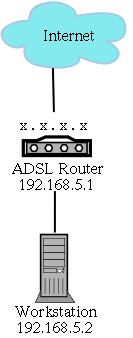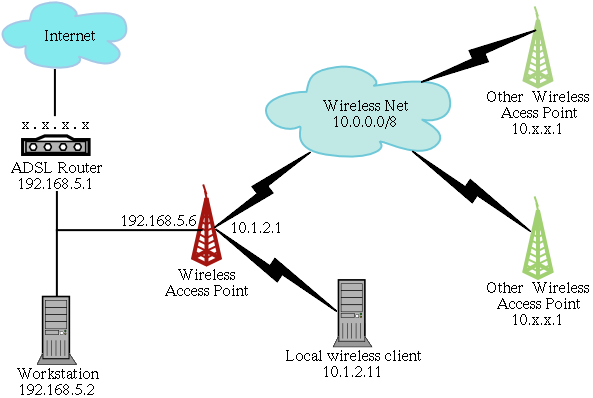
| Previous | Linux Wireless Access Point HOWTO |
Next |

|
Where x.x.x.x is the IP address assigned to you by your ISP and 192.168.5.0/255.255.255.0 is the RFC-1918 reserved network used on your LAN. |

|
Where your Access Point has two network interfaces; 192.168.5.6 is the IP address that you assign to your Access Point on your wired network (LAN) and 10.1.2.1 is the IP address that you assign to your Access Point on the wireless network. |
| Previous | Home | Next |